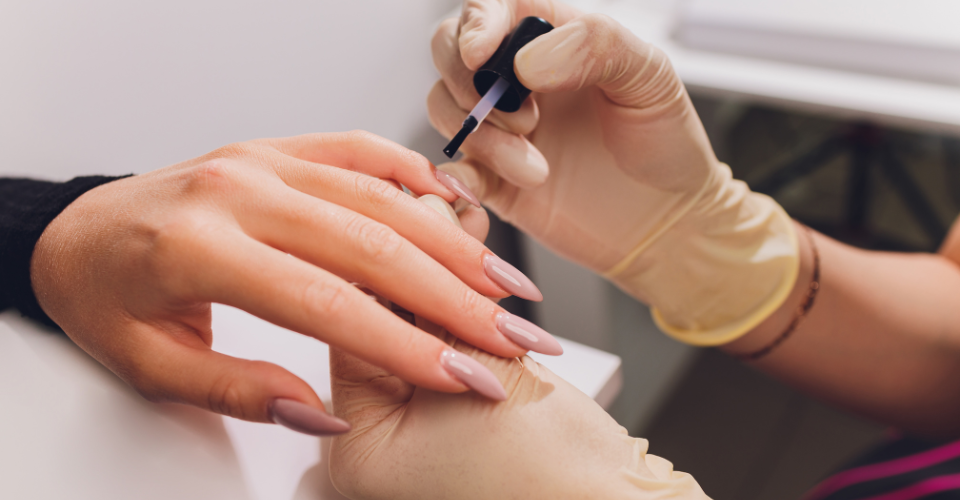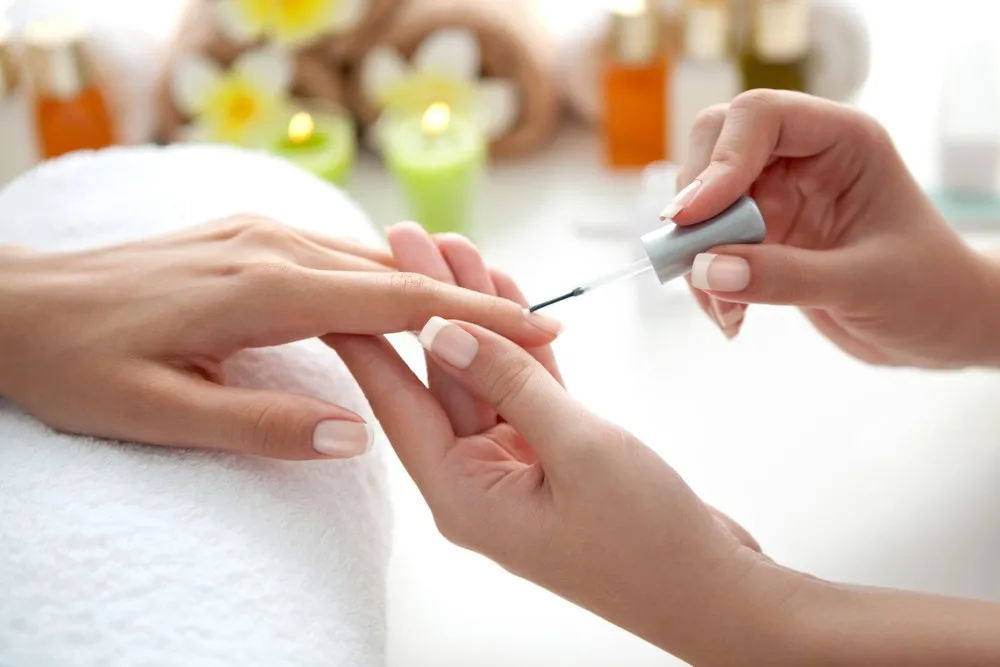Are you an avid nail enthusiast looking to streamline your manicure routine or perhaps a DIY nail artist seeking to save time and money? If you’ve ever wondered whether it’s possible to use a top coat as a base coat, you’re in the right place.
Yes, you can use a base coat as a topcoat, and vice versa. However, be cautious because interchanging them may not yield the same results and could affect your nail polish’s durability, leading to peeling and chipping.
In this guide, you’ll explore the intriguing world of nail care and answer that burning question that has piqued the curiosity of many in the beauty community.
Understanding the Essential Roles of Base and Top Coats

A base coat serves as the fundamental foundation for your nail polish application, ensuring its longevity and adherence to the nail surface. It acts as a secure adhesive, akin to a primer, which optimally readies your nails for the color to come.
On the other hand, a topcoat functions as the ultimate shield, safeguarding your nail polish against external factors and potential damage. It forms a protective, glossy barrier that not only enhances the aesthetic appeal but also fortifies the longevity of your manicure.
While both share common ingredients, their distinct roles demand different compositional nuances. Base coats are enriched with robust, adhesive resins, anchoring the polish firmly to your nails. In contrast, topcoats are enriched with film-forming agents, which seal in the color, fortify its durability, and create a high-gloss finish. Also, interchanging these essential coats could compromise the intended results of your nail polish application.
Compelling Reasons to Avoid Using a Base Coat as a Topcoat
Inadequate Protection for Your Nail Polish:
Base coats stick nail polish to your nails effectively because they’re stickier and softer than topcoats. Using a base coat as a topcoat is like trying to protect yourself with a soft cotton pillow from sharp pins – it won’t provide the necessary defense, leaving your polish vulnerable to damage from dirt, light, water, and chemicals.
Ineffective Bonding with Your Nail Polish:
The application sequence of base coats before nail polish is deliberate and essential. They are formulated with the specific purpose of establishing a robust bond between your natural nails and the nail polish. Without this foundational layer, your nail polish is susceptible to premature chipping and reduced longevity.
Loss of Gloss and Luster:
Lastly, they typically lack the glossy finish associated with topcoats. Their primary role is adhesion and not the enhancement of shine. When employed as a topcoat, they fail to provide the desired lustrous finish. Even in cases where certain base coats may offer a semblance of gloss, the effect is short-lived compared to the enduring brilliance provided by dedicated topcoats.
Key Reasons to Avoid Using a Top Coat as a Base Coat
Inadequate Adhesion to Your Nail Plate:
As previously mentioned, base coats feature a stickier formulation designed to facilitate strong adhesion between your natural nails and nail polish. In contrast, topcoats prioritize the protection and enhancement of the nail polish itself. Attempting to use it as a base coat will result in suboptimal adhesion, as it lacks the necessary grip to anchor the polish securely to your nail plate.
Insufficient Protection Against Damage and Stains:
Moroevr, it protect your natural nails from damage and staining caused by nail polish. They act as a barrier, preventing issues like yellowing. Using a topcoat as a base coat can’t provide this protection, potentially leading to staining and damage to your nails.
Nail Polish Application: Base Coats and Topcoats
Initiate with the Base Coat: Prioritize the preservation and resilience of your nails when embarking on your nail care routine. Begin by meticulously cleaning your nails and then, apply the base coat. Remember, it acts as an anchor, akin to adhesive tape, securing the longevity of your nail polish. Its omission could lead to premature wear and chipping of your manicure.
Generous Application of Base Coat: Apply a liberal and even layer of the base coat to cover the entirety of your nail plates. This comprehensive coverage is vital in preventing any unwanted staining or discoloration that nail polish may cause.
Allow the Base Coat to Cure: Exercise patience as you allow it to air dry for approximately one minute, ensuring it forms a strong and resilient foundation.
Apply Desired Nail Polish: Once it has dried, proceed to apply your chosen nail polish. Optimal results are achieved with the application of two coats of nail polish. Allow each coat to dry thoroughly.
Introduce the Protective Topcoat: As the final step, apply the topcoat. Similar to the base coat, ensure a generous and even application. It serves as the guardian of your manicure, imparting a glossy finish and a protective shield against potential damage from water, light, UV rays, and other external elements.
Allow Topcoat to Dry: Exercise patience one final time, permitting it to fully dry. The end result? Not only will your nails exude a polished, lustrous appearance, but they will also be fortified against the challenges of the outside world.
Understanding the Function of 2-in-1 Base Coat and Topcoat Products

Curiosity often arises regarding the utility of 2-in-1 base coat and topcoat nail products. While these amalgamations exist, they come under scrutiny from many nail experts due to the distinct roles of base and topcoats.
Furthermore, it is worth noting that not all 2-in-1 base coat and topcoat products are created equal. Their effectiveness can vary, and when it comes to safeguarding your nails, these all-in-one solutions may not always offer the optimum level of protection.
Also, despite their potential convenience, using separate base and topcoats is still recommended by the majority of nail professionals who emphasize the importance of their unique functions in achieving nail health and longevity.
FAQs
Is the base coat or top coat more important?
No, The top coat helps prevent chipping and extends the polish’s longevity, while the base coat enhances polish adhesion and prevents smudging. In a pinch, one can be used for both functions, as they share similarities.
What goes on first, the top coat or the base coat?
Begin with the clear base coat to bond with the natural nail and provide an adhesive surface for the pigment. Apply the topcoat over the polish to seal in color and protect it.
Are the gel base and top coats the same?
No, The gel base and top coats are distinct. The base coat aids color adhesion to the nail, while the top coat offers a shiny, protective finish.
What happens if you don’t use a base coat with gel polish?
For a gel manicure, base and top coats are essential. Skipping them can lead to premature lifting and peeling of the gel polish, reducing its durability.
How long should you wait before applying the topcoat?
Allow two full minutes between applying the base coat and color, between color coats, and before applying the topcoat. This timeframe ensures that each layer dries sufficiently for the next coat to adhere.
Can I use nail hardener as a top coat?
Yes, you can use nail hardener or strengthener as a topcoat (but not as a base coat). This can be a good option, especially if your nails are prone to chipping.
What can I use if I don’t have a base coat?
if you don’t have a base coat, it’s not recommended to use a topcoat as a substitute. Instead, consider applying a solid white or clear layer of nail polish to protect your nails and enhance the color. Make sure to buff your nails for better adhesion.
Final Words
In conclusion, using a top coat as a base coat is possible, but it comes with certain considerations. While it may work in a pinch, it may not provide the same level of adhesion and protection as a dedicated base coat.
In addition, to ensure the best results for your manicure and preserve the longevity of your nail polish, it’s advisable to use the appropriate base and top coats designed for their specific functions.

